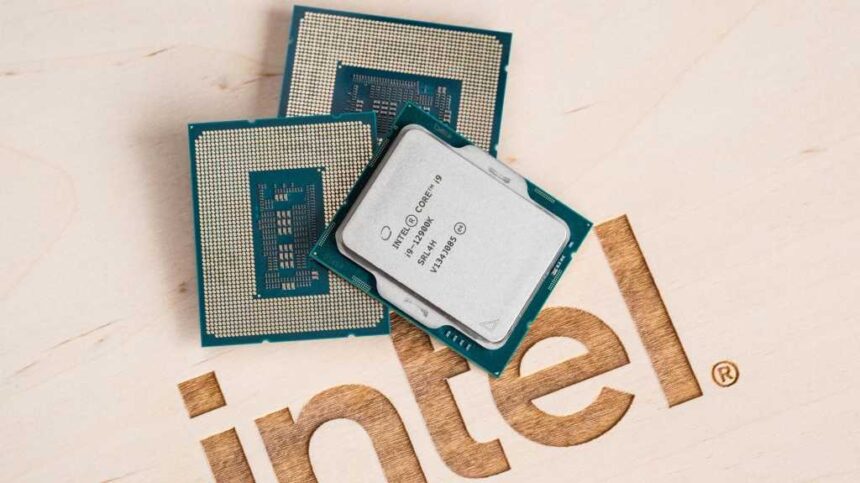US President Donald Trump’s announcement Friday that the US government is taking a 9.9% stake in Intel to defend national interests will shift the dynamics of IT procurement globally.
“Intel’s new identity as a government-backed ‘national champion’ represents a structural shift in how enterprises must evaluate supplier relationships,” said Sanchit Vir Gogia, chief analyst at Greyhound Research. “Technology buyers have framed procurement primarily in terms of cost, performance, and roadmap alignment. Intel’s repositioning disrupts that calculus.”
President Trump rounded up the size of the government’s stake when he announced it on Truth Social: “It is my Great Honor to report that the United States of America now fully owns and controls 10% of INTEL, a Great American Company that has an even more incredible future.”
“The United States paid nothing for these Shares, and the Shares are now valued at approximately $11 Billion Dollars.,” Trump wrote.
Intel’s version was a little different: It said that the US government “will make an $8.9 billion investment in Intel common stock, reflecting the confidence the Administration has in Intel to advance key national priorities and the critically important role the company plays in expanding the domestic semiconductor industry.”
The truth lies somewhere in between: The $8.9 billion comprises the capitalization of a $3.2 billion grant from the Department of Defense’s Secure Enclave program and $5.7 billion in remaining CHIPS Act grants which, with the $2.2 billion in CHIPS Act grants Intel has already received, make up Trump’s $11 billion figure.
The deal makes the US government Intel’s largest shareholder, although it will have no representation on Intel’s board, and has agreed to vote with the board on shareholder matters. Intel has also given the government the right to purchase an additional 5% stake if the company loses majority control of its foundry business, it said.
“As the only semiconductor company that does leading-edge logic R&D and manufacturing in the US, Intel is deeply committed to ensuring the world’s most advanced technologies are American made,” Intel CEO Lip-Bu Tan said in the statement.
The new procurement reality
This recasting of Intel’s role in the industry as a government-backed national champion creates a fundamental shift in supplier evaluation, moving beyond traditional cost-performance metrics to include political considerations.
Neil Shah, VP for research at Counterpoint Research, agreed: “With Intel’s growing role as a national champion, IT leaders need to recalibrate their procurement strategies. Intel’s government-backed status provides a more robust supply chain, reducing disruption risk from global geopolitical tensions.”
The recalibration becomes more complex when considering Intel’s dual role as a commercial vendor and national security asset, which creates potential conflicts enterprises must understand when evaluating future technology roadmaps.
The core concern centers on resource allocation. “The risk for commercial customers is that engineering bandwidth may be diverted away from accelerating competitive product roadmaps in AI, data-center silicon, and edge workloads,” Gogia warned.
However, Dr. Danish Faruqui, CEO at Fab Economics, disputed this concern: “R&D resource allocations for developing leading edge fabrication technologies are the same for both public and private productization, so enterprise customers should not worry about delay in technology maturity.”
National security vs financial security
The impact may be more subtle, affecting Intel’s commercial focus. Shah noted that government support “could lead Intel to prioritize national security initiatives over commercial needs, potentially impacting its product roadmaps and cost competitiveness.”
Beyond these resource allocation concerns, the US government’s move creates a two-tiered global market structure affecting enterprises differently based on geographic location and regulatory requirements.
International enterprises face the most significant challenges. “For European and Asian CIOs, Intel’s government-backed monopoly raises concentration risk, as supply will inevitably be prioritized for US customers,” Gogia warned.
Paradoxically, Intel’s government support could strengthen competition by freeing rivals from confrontation with a subsidized competitor. Shah suggested this “could create an opening for rivals like AMD, Nvidia, and Qualcomm to innovate more freely in commercial markets.”
The competitive landscape benefits from broader CHIPS Act funding. Faruqui emphasized that domestic sourcing extends beyond Intel: “Whether leading edge fabrication happens at Intel, TSMC or Samsung foundry on US soil, there should not be any forced choices for customers.”
Concerns persist for Intel’s foundry business
These competitive dynamics become particularly relevant when examining Intel’s foundry division, where government backing provides financial stability, but analysts questioned whether this resolves fundamental business challenges.
The deal offers crucial breathing room for Intel’s struggling manufacturing-for-hire business, according to Alvin Nguyen, senior analyst at Forrester. “This $8.9B investment provides a financial lifeline as they find foundry customers and develop new processes,” said Nguyen. However, he cautioned that “this does not mean the risks associated with their foundry business are gone.”
The core issue remains attracting customers rather than capital availability. Gogia explained that “despite substantial subsidies, the foundry division continues posting multi-billion-dollar losses with limited customer traction.” The problem, he noted, is that “subsidies extend Intel’s financial runway but don’t address structural competitiveness weaknesses” such as yield rates and process maturity that customers demand.
Industry experts emphasized that government cash alone cannot solve market-driven challenges. “US government equity holdings is no solution for attracting foundry customers,” Faruqui noted.
This suggests Intel must still prove its technical capabilities and service quality to win business from major chip designers, regardless of federal support.
Keep a close eye on the roadmap
Given these multifaceted challenges and opportunities, analysts provided guidance for navigating Intel’s transformation into a government-backed supplier, emphasizing continuous monitoring and strategic portfolio management.
Performance tracking becomes crucial given Intel’s hybrid status. “IT leaders should closely monitor Intel’s progress on its technology roadmap and price competitiveness to ensure government backing translates into tangible benefits,” Shah said.
Strategic positioning requires balancing stability against limitations. Gogia recommended treating “Intel’s foundry as a politically secured option, useful for compliance-heavy workloads where domestic sourcing is required. But it should not be relied upon as the sole provider of leading-edge capacity.”
Read the full article here










